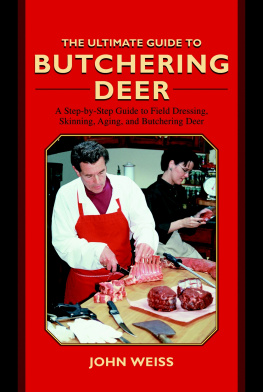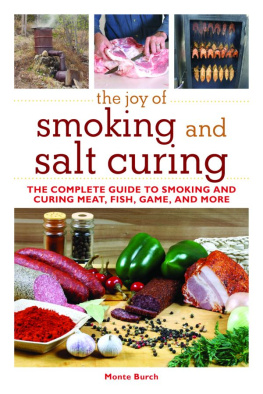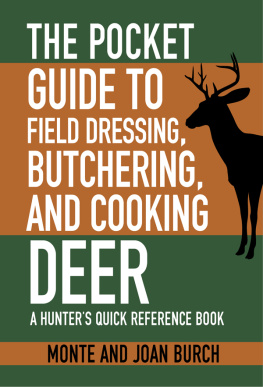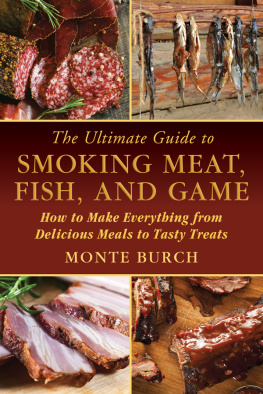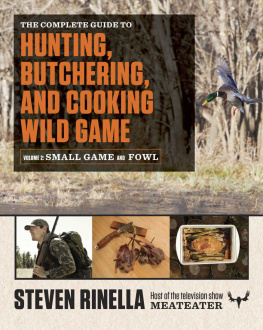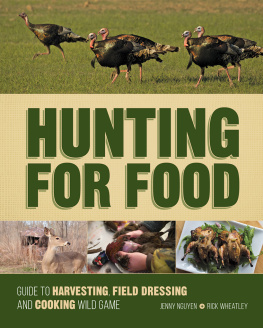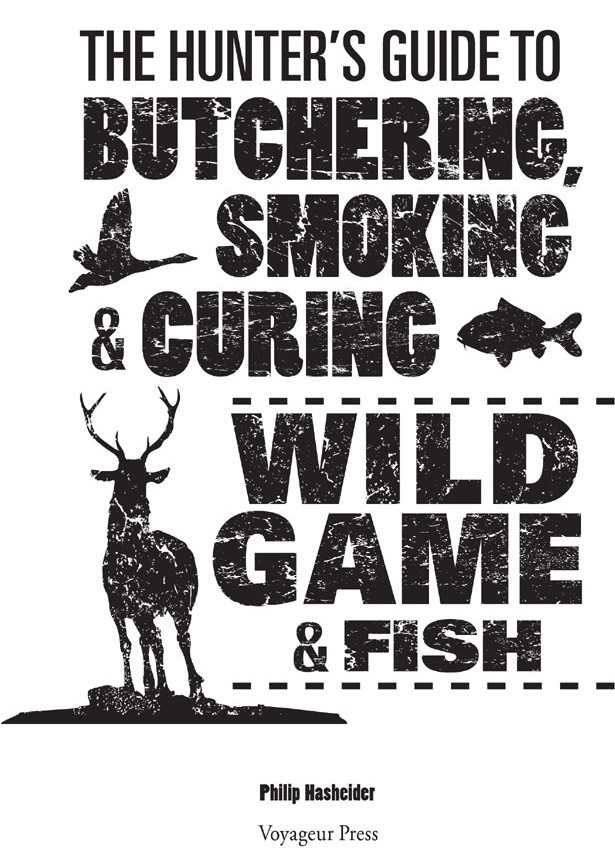
Dedication
This book is dedicated to my late nephew, David Hasheider, who was an avid hunter and held a deep reverence and respect for the land and the creatures that inhabit it.
First published in 2013 by Voyageur Press, an imprint of MBI Publishing Company, 400 First Avenue North, Suite 400, Minneapolis, MN 55401 USA
2013 Voyageur Press Text 2013 Phillip Hasheider
All rights reserved. With the exception of quoting brief passages for the purposes of review, no part of this publication may be reproduced without prior written permission from the Publisher.
The information in this book is true and complete to the best of our knowledge. All recommendations are made without any guarantee on the part of the author or Publisher, who also disclaims any liability incurred in connection with the use of this data or specific details.
We recognize, further, that some words, model names, and designations mentioned herein are the property of the trademark holder. We use them for identification purposes only. This is not an official publication.
Voyageur Press titles are also available at discounts in bulk quantity for industrial or sales-promotional use. For details write to Special Sales Manager at MBI Publishing Company, 400 First Avenue North, Suite 400, Minneapolis, MN 55401 USA.
To find out more about our books, visit us online at www.voyageurpress.com.
Digital Edition: 978-1-61058-802-7
Softcover Edition: 978-0-7603-4375-3
Library of Congress Cataloging-in-Publication Data
Hasheider, Philip, 1951
The hunters guide to butchering, smoking, and curing wild game and fish / by Philip Hasheider.
pages cm
Includes index.
ISBN 978-0-7603-4375-3 (pbk.)
1. Game and game-birds, Dressing of. 2. Slaughtering and slaughter-houses. 3. Meat--Preservation. I. Title.
SK283.8.H37 2013
799.25--dc23
2012051137
Editor: Elizabeth Noll
Design Manager: James Kegley
Layout by: Mandy Kimlinger
Illustrations by: Trevor Burks
Photo credits: Shutterstock.com:
Contents
INTRODUCTION

H unting wild game has been a human activity since the beginning of our existence. The pursuit, capture, and consumption of wild animals, fish, and fowl provided protein for our early hunter-gatherer ancestors. In many countries, the long arc of history has seen a transformation of hunter-gatherers into consumers who routinely purchase their daily meals at supermarkets, restaurants, and convenience stores. Most people no longer hunt for their food. This means that expertise in handling wild game, which was once commonplace, has declined.
Hunting Defined
Hunting, in its most widely accepted meaning, involves the search for wild game animals that will provide meat protein to the diet. This term today refers to lawful hunting (where specific rules are obeyed) and not to poaching, which is the killing, trapping, or capture of an animal contrary to established law.
The ethics of todays hunting culture require hunters to use as much of the carcass meat as possible. To hunt, shoot, and kill an animal simply for sport should be discouraged and is, in many ways, illegal. The exception to this involves the elimination of vermin to prevent the spread of diseases or overpopulation. Vermin, such as rats, are not typically a part of the North American diet and are not held to the same ethical treatment.
Societal Evolution
For our hunter-gatherer ancestors, a successful hunt, in which prey were killed and subsequently eaten, was a matter of survival; with no success, there was little or nothing to eat. The development of small tribes or clans into cohesive units may have been as much for hunting purposes as it was for group protection and socializingthe more hunters, the greater their chances for success. To keep all members satisfied, distribution of the captured prey was determined by the group in a manner that was fair and equitable. Food had to be shared in sufficient quantities to ensure adequate nutrition for the hunters, who needed to maintain their strength for future hunts.
As human civilization evolved, community participation was an integral part of its development. Shared concerns helped bind people together, as did marriages within groups. This cohesiveness encouraged the sharing of difficult tasks such as planting, harvesting, and butchering, among others.

Hunting can occur in many different locales, such as in grassy fields, which often contain small-game animals like rabbits. Each habitat provides unique experiences and challenges for hunters.

Wild game found in hilly or mountainous terrain may make the hunting experience more challenging. A successful hunt with a trophy to take home can provide a lifetime of memories and stories.
A major shift occurred in food-gathering methods during the Industrial Revolution. As people left rural areas for urban employment, there was no longer ready access to wild game or the opportunity to hunt. Urban areas with dense populations restricted animal husbandry due to potential human health problems.
With the rise of meat markets and local butchers, people gradually shifted away from hunting as a necessary method for obtaining meat to hunting as a pastime or sport.
Diet Evolution
There are two types of meat protein presently available to consumers: wild game and domestically raised. There is an ongoing debate about the health benefits of each.
Our distant ancestors hunted wild game that was available, which typically included small game such as birds and fowl, rodents, turtles, rabbits, and anything else that might have wandered across their paths. Large animals that were hunted often included bison, deer, bear, moose, and elk.
Over time, as populations changed and migrated to urban areas, diets subsequently changed as well. As less effort was required to secure a meal, physical activity decreased and associated health problems increased.
This change in diet also paralleled a decrease in the use of some animals as food sources and an increase in the use of others. Today, the typical diet in the United States draws from four groups of animals for most of its meat: cattle, sheep, pigs, and domestic fowl. The vast majority of consumers rarely eat any other kind of animal, especially those we now label as exotics but that may have been normal fare for our ancestors. Exotics include squirrels, rabbits, frogs, snakes, turtles, or other small animals.
As a result of these changes, most people no longer know where their food comes from and, rather than observing or participating in its processing, they purchase meats that may have been processed great distances from where the animals were raised. This situation in turn now seems to be a driving force for those seeking locally grown foods.
Another attitude shift has recently surfaced regarding wild game meat. Television shows, food networks, magazines, blogs, chefs, restaurant reviews, and a vast array of other media outlets now promote wild game as a food source. This increased attention to the uniqueness and value of wild game has made people aware of its potential benefits.


